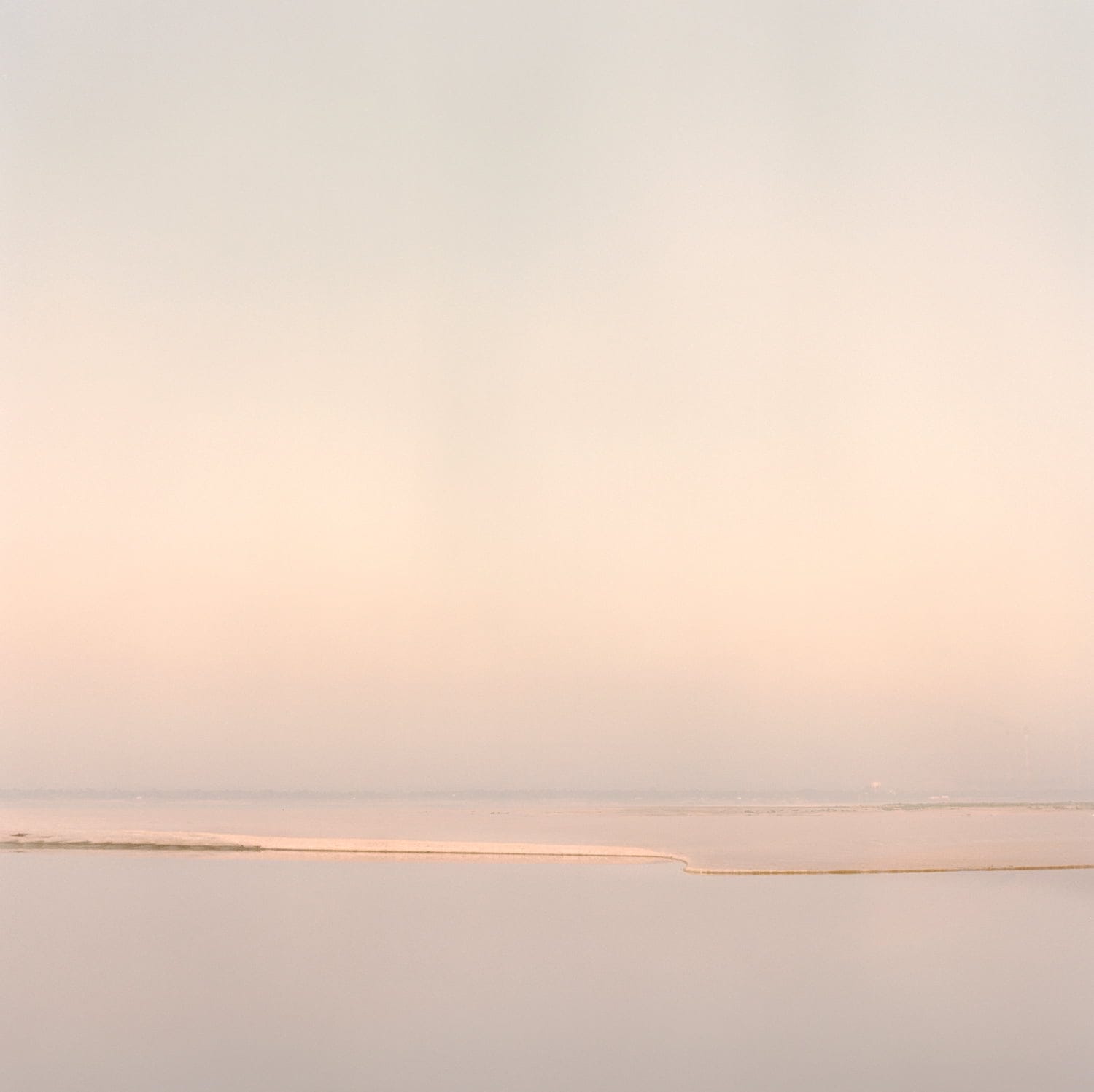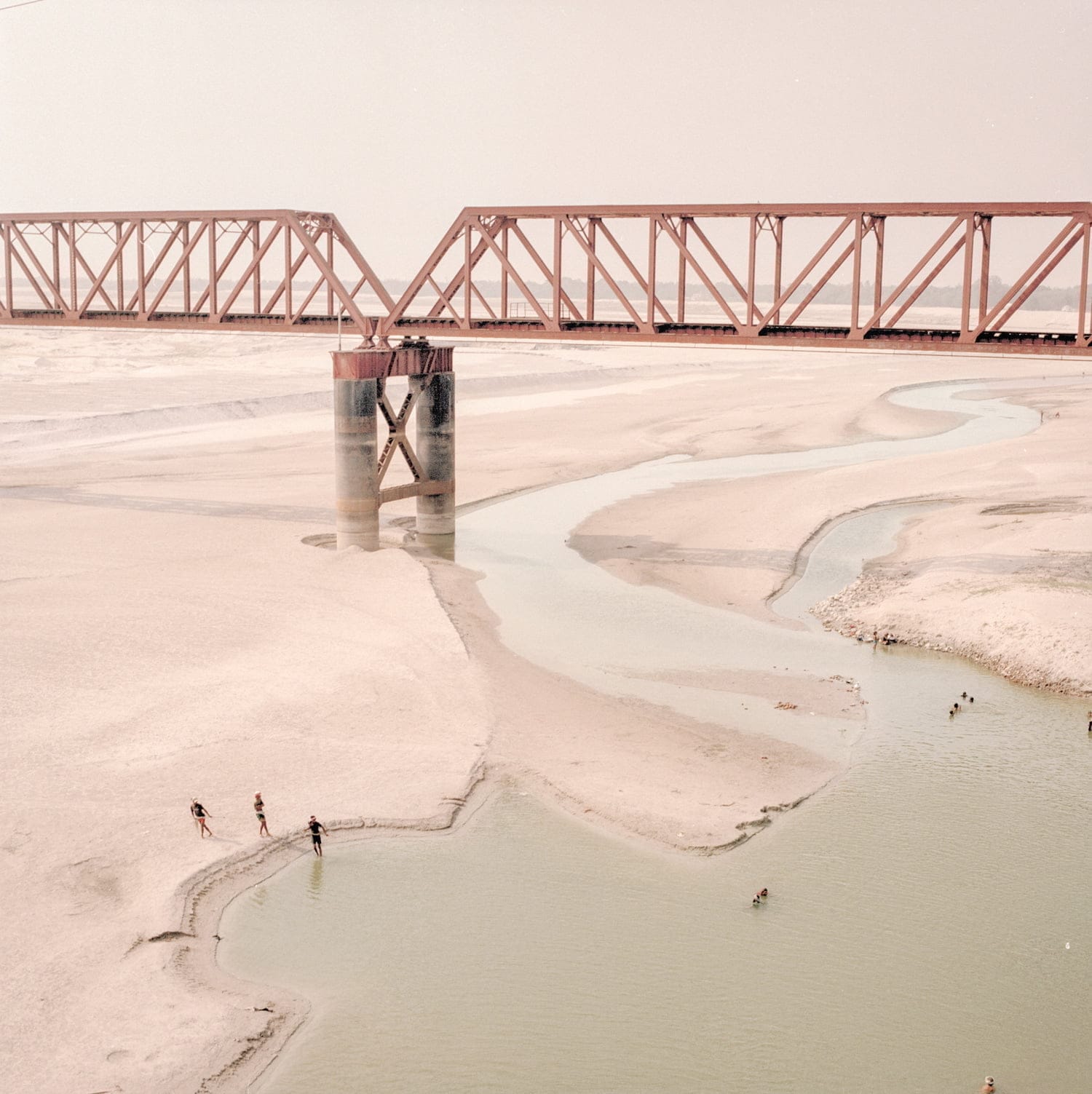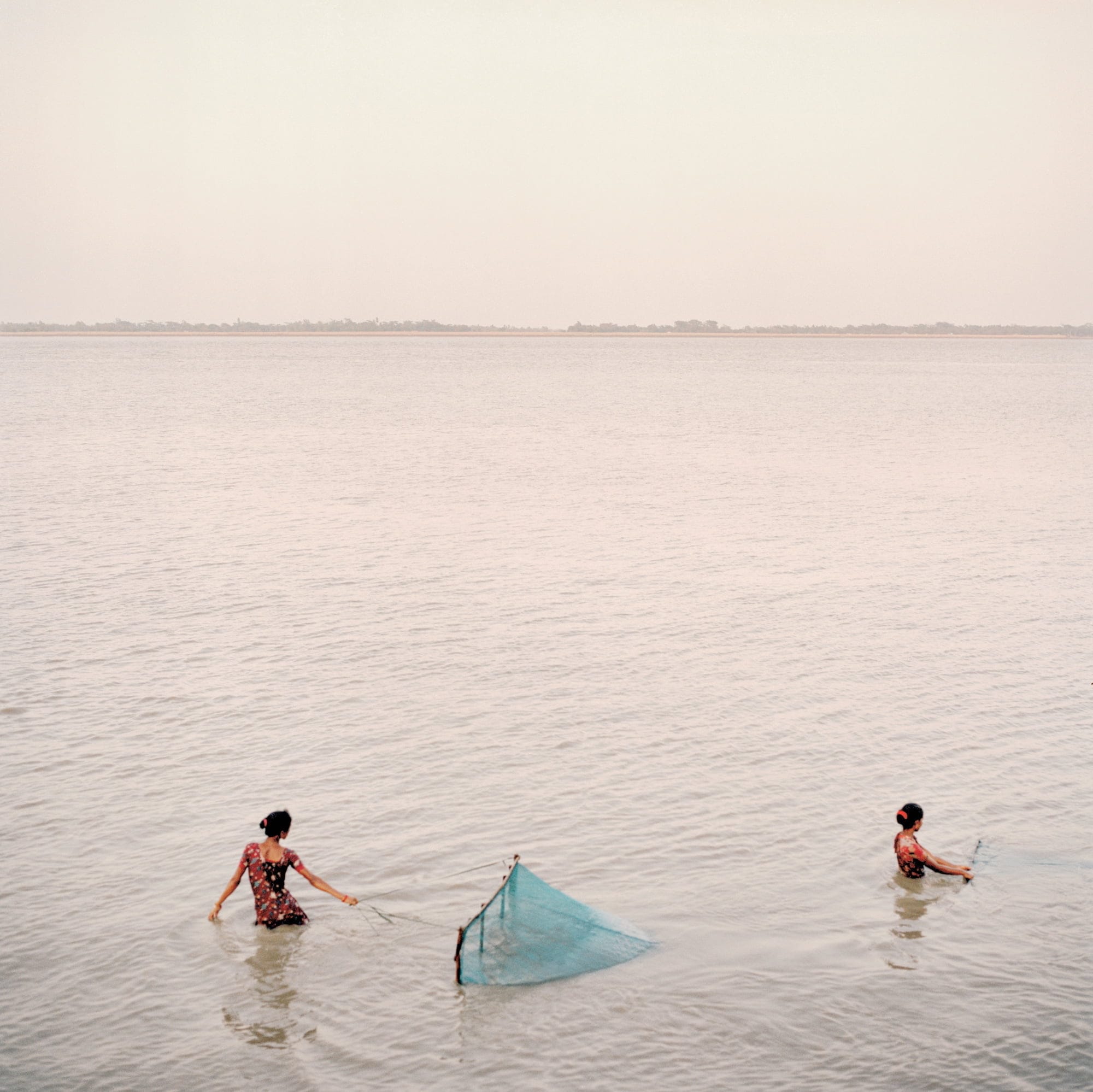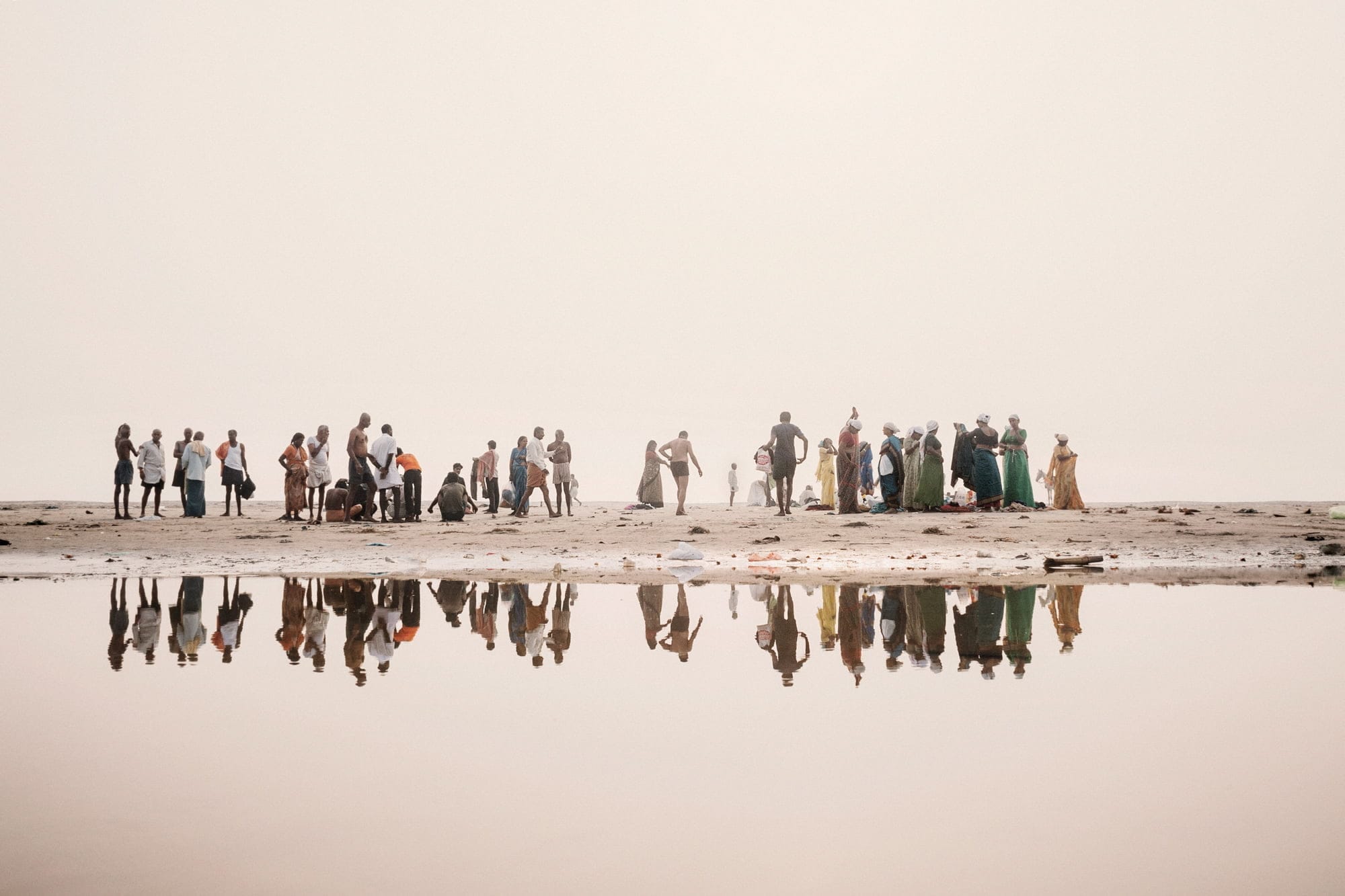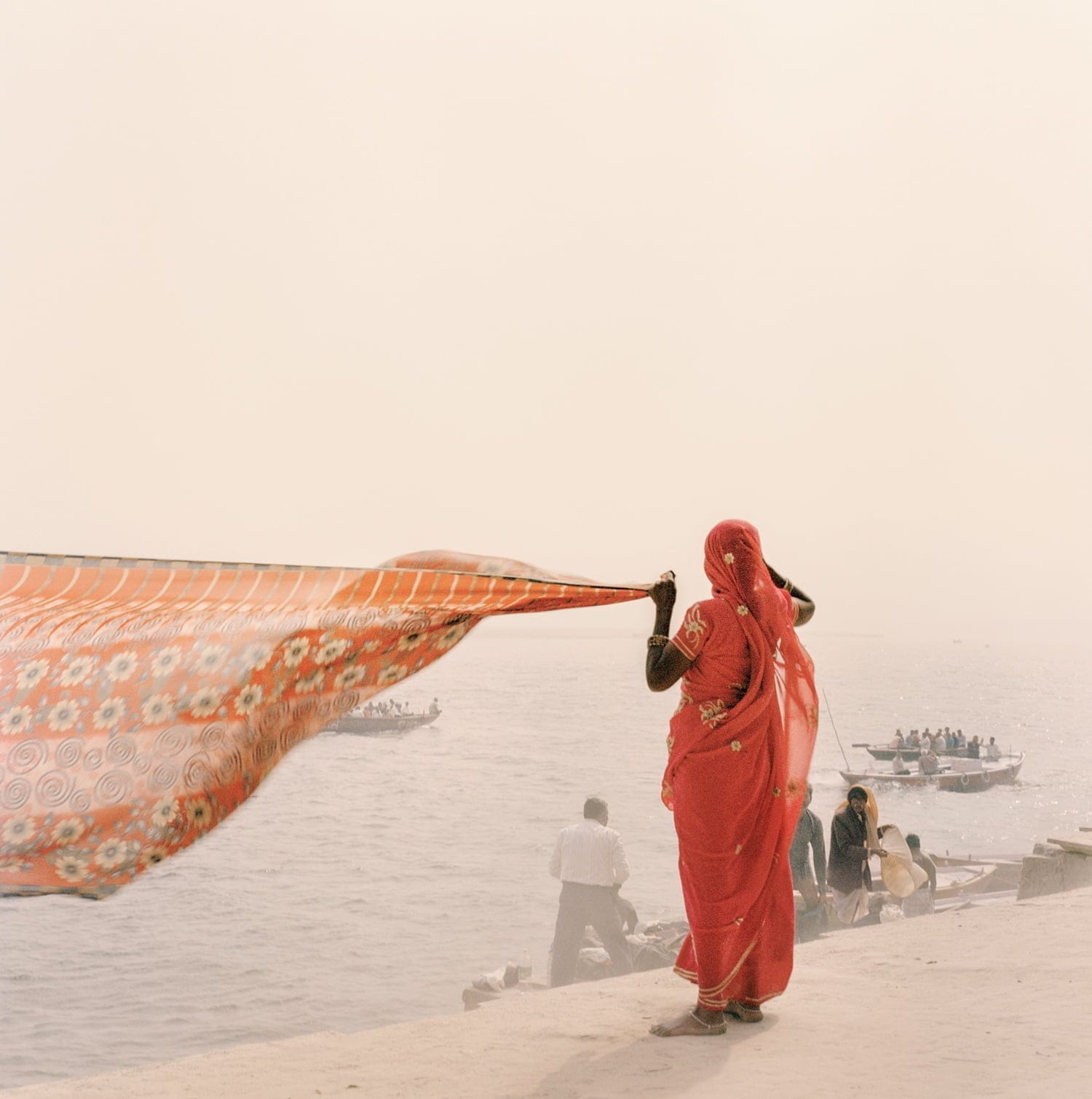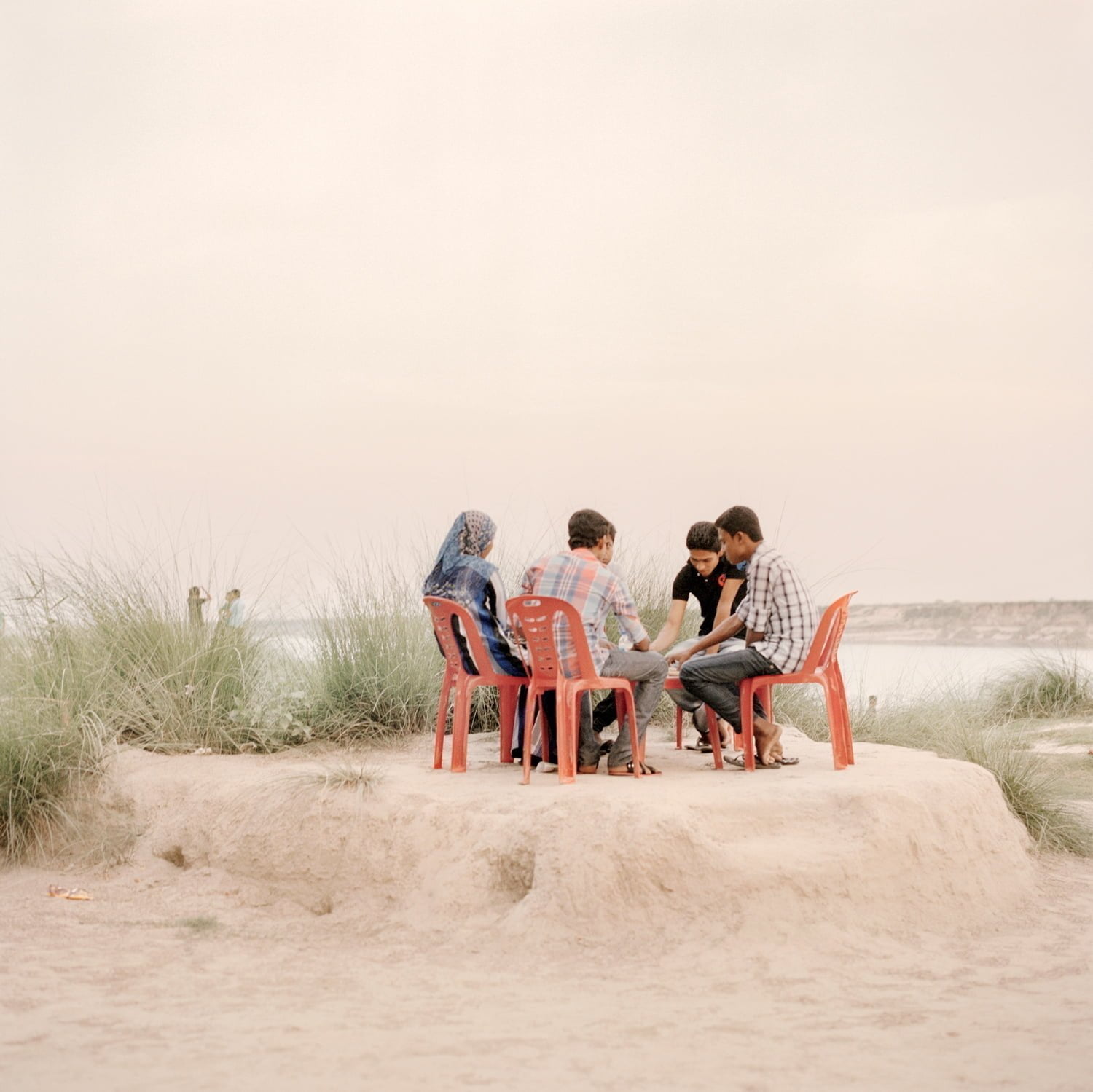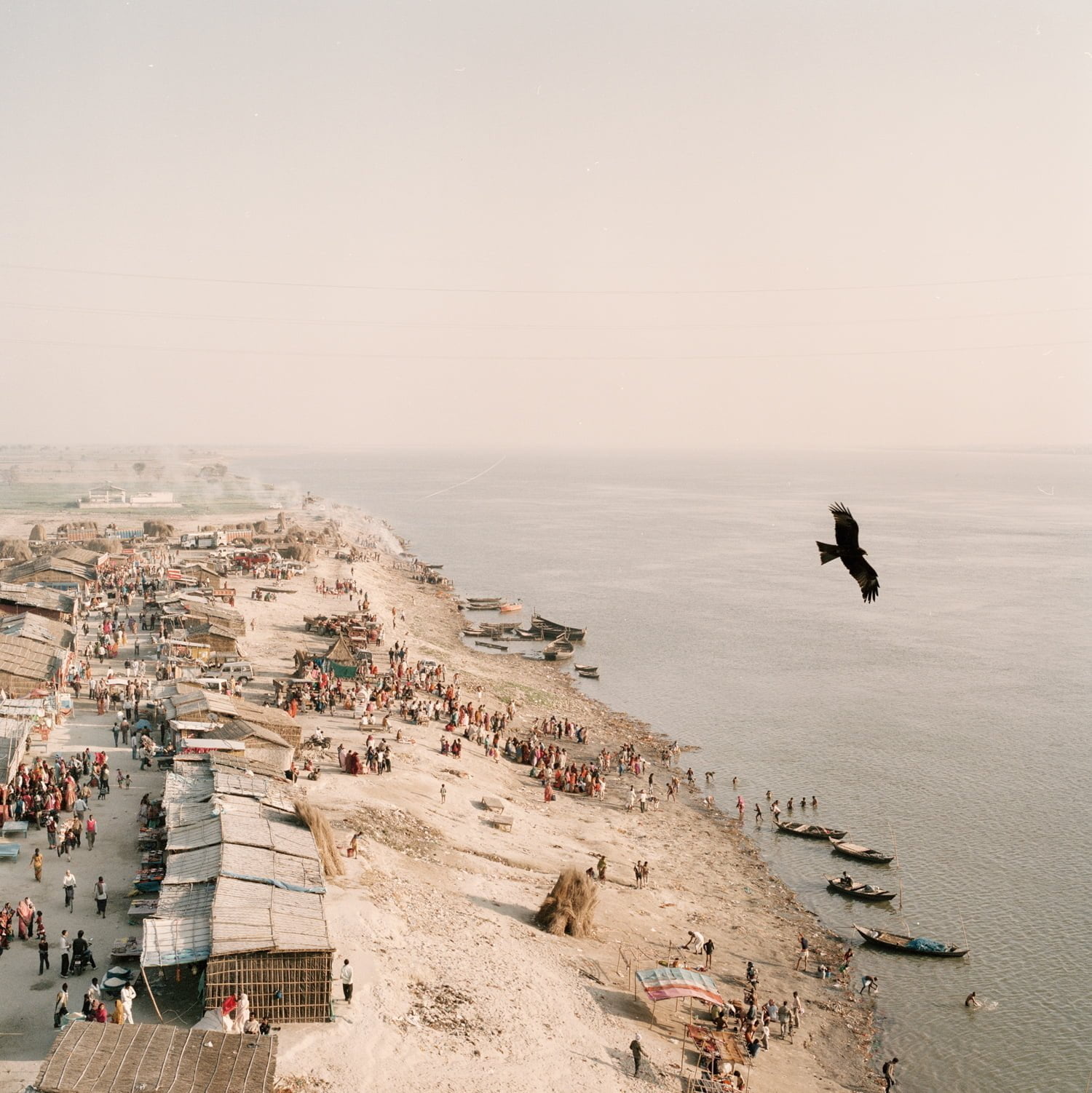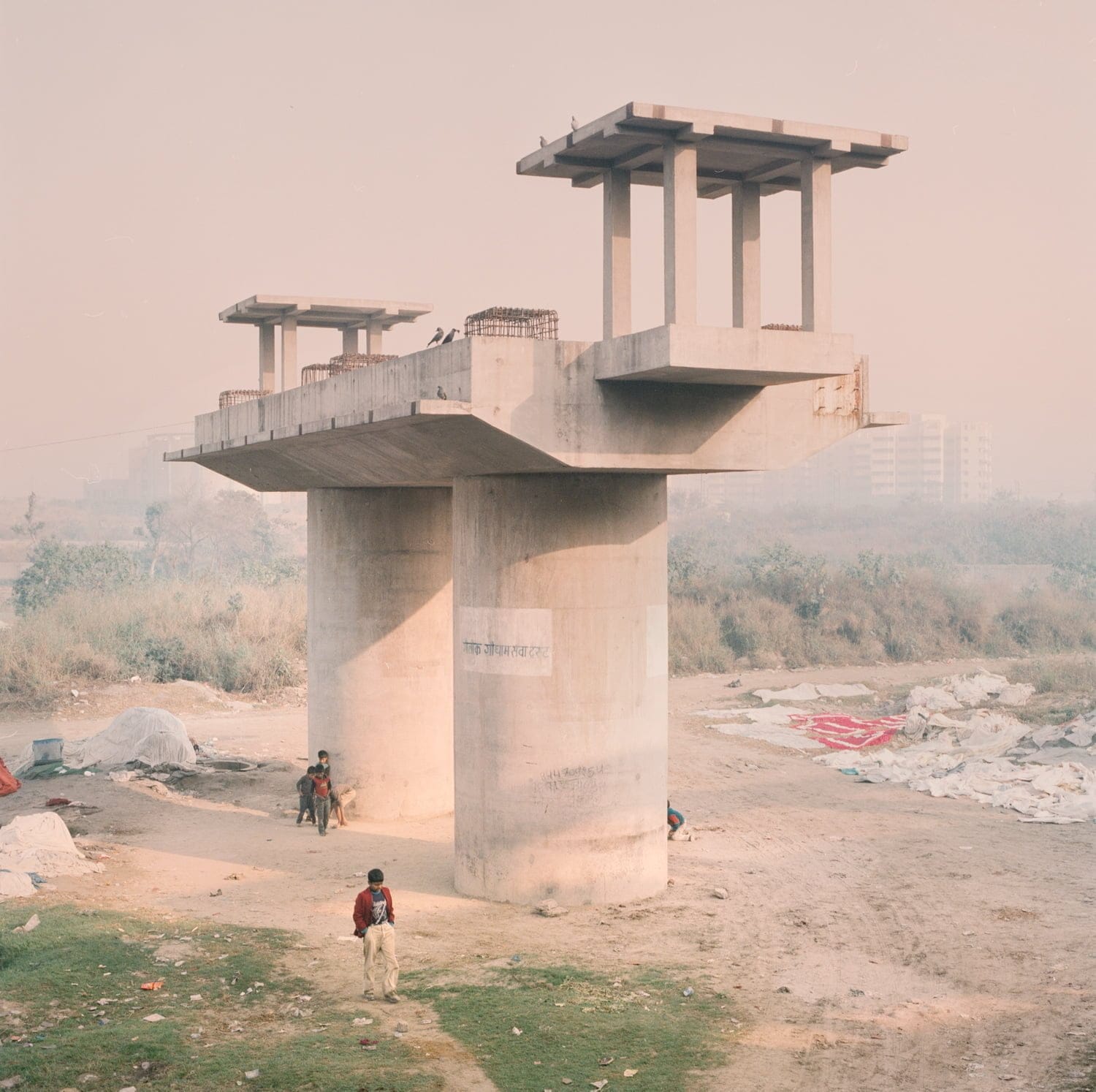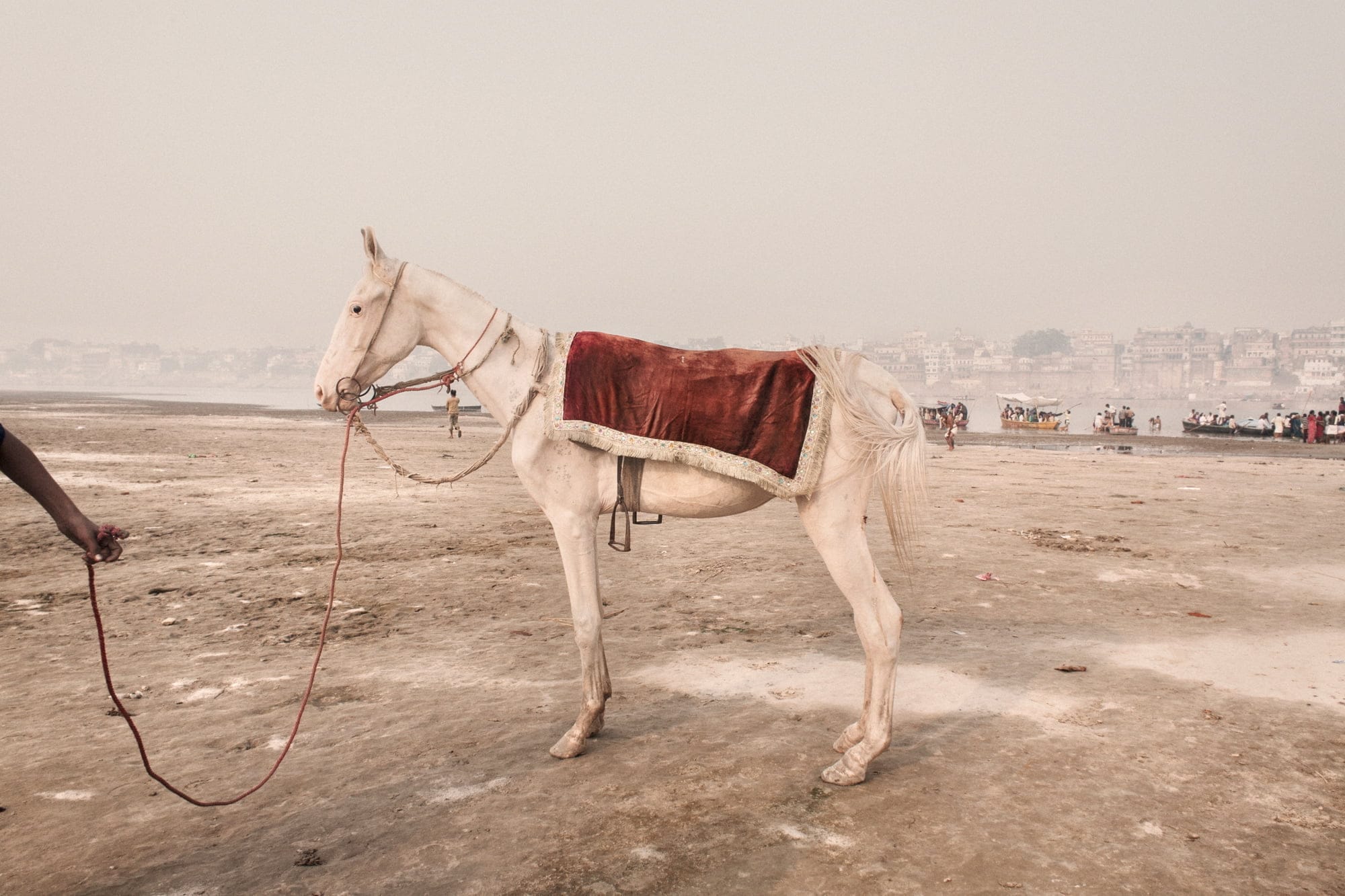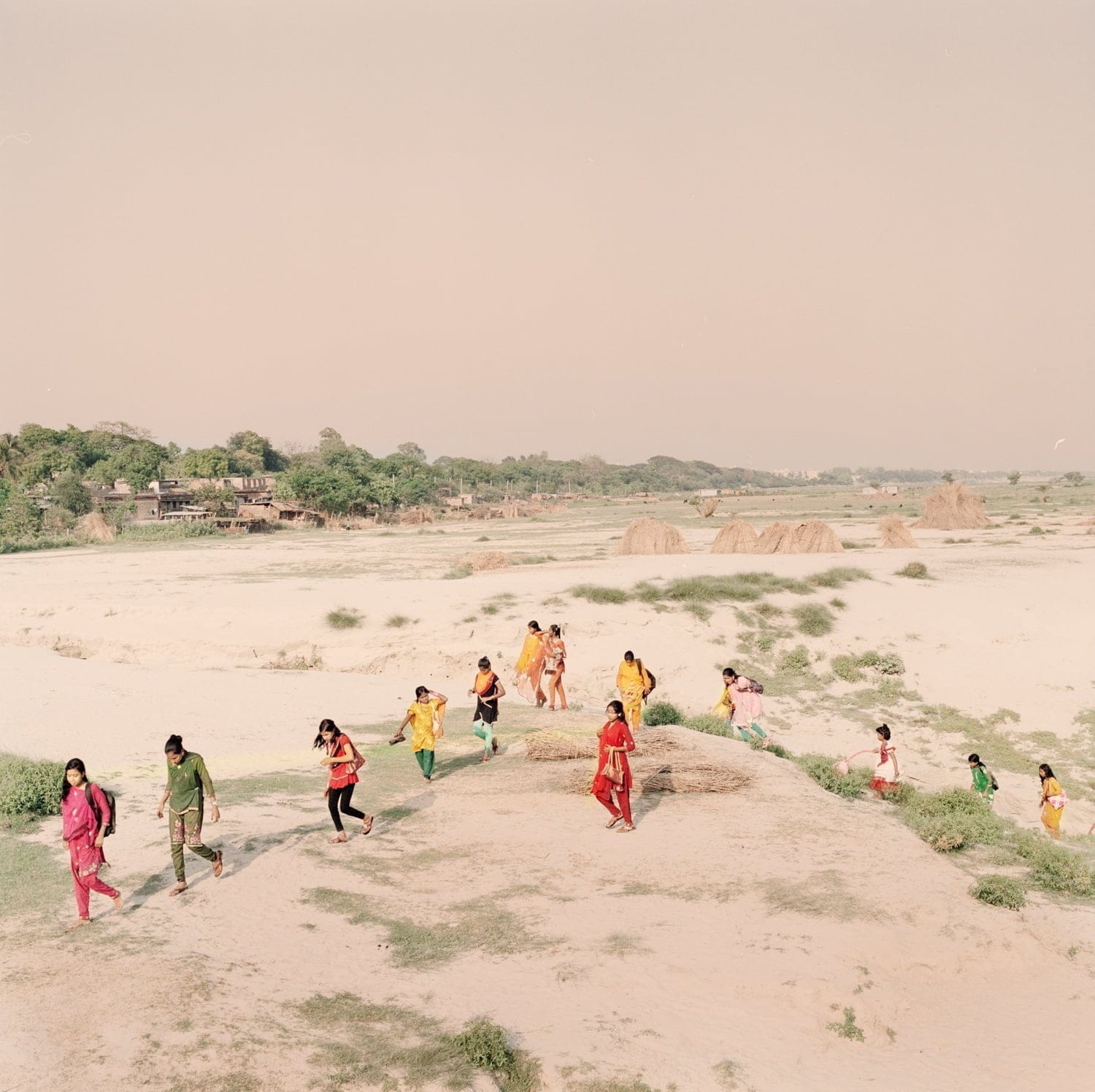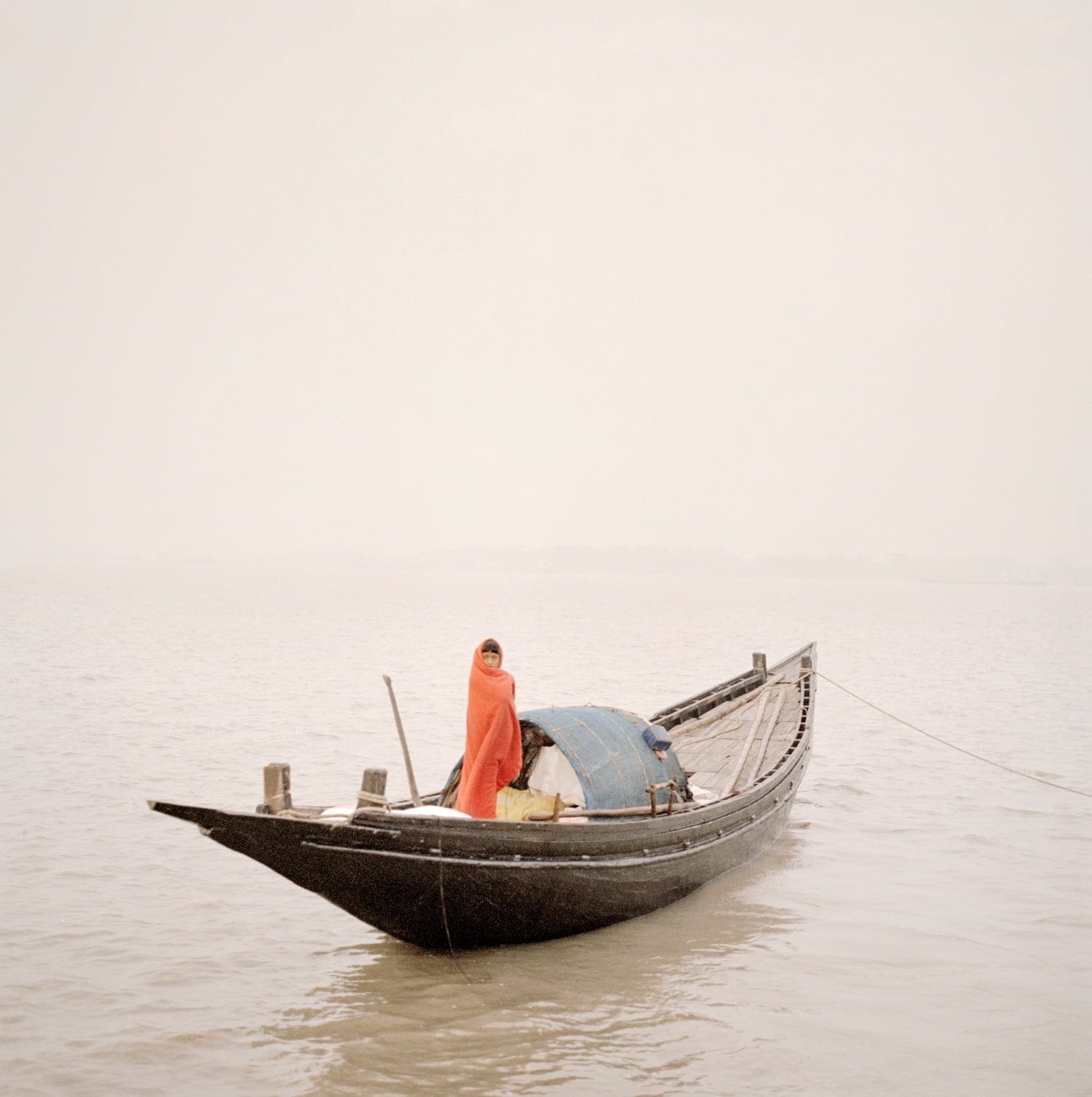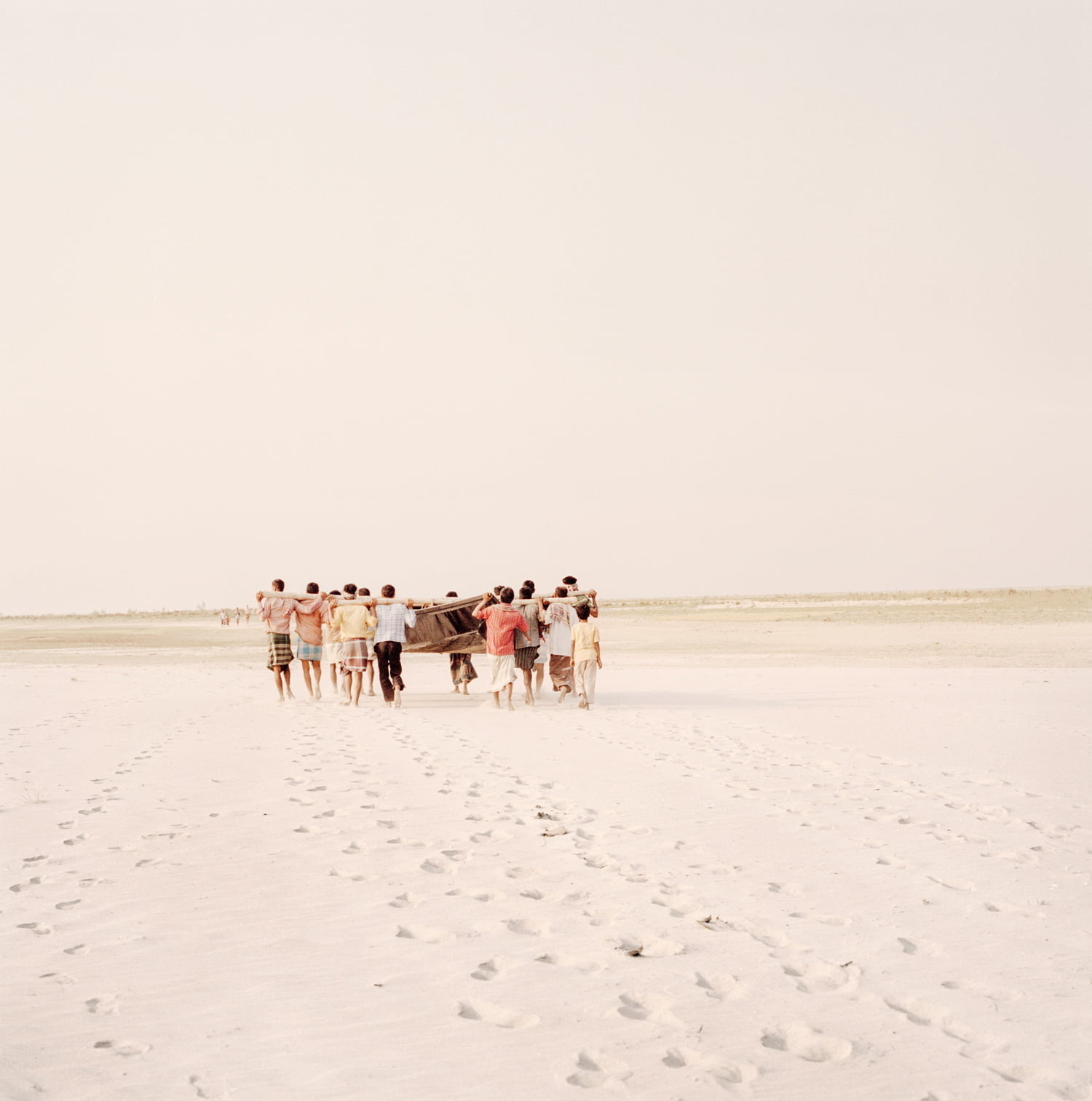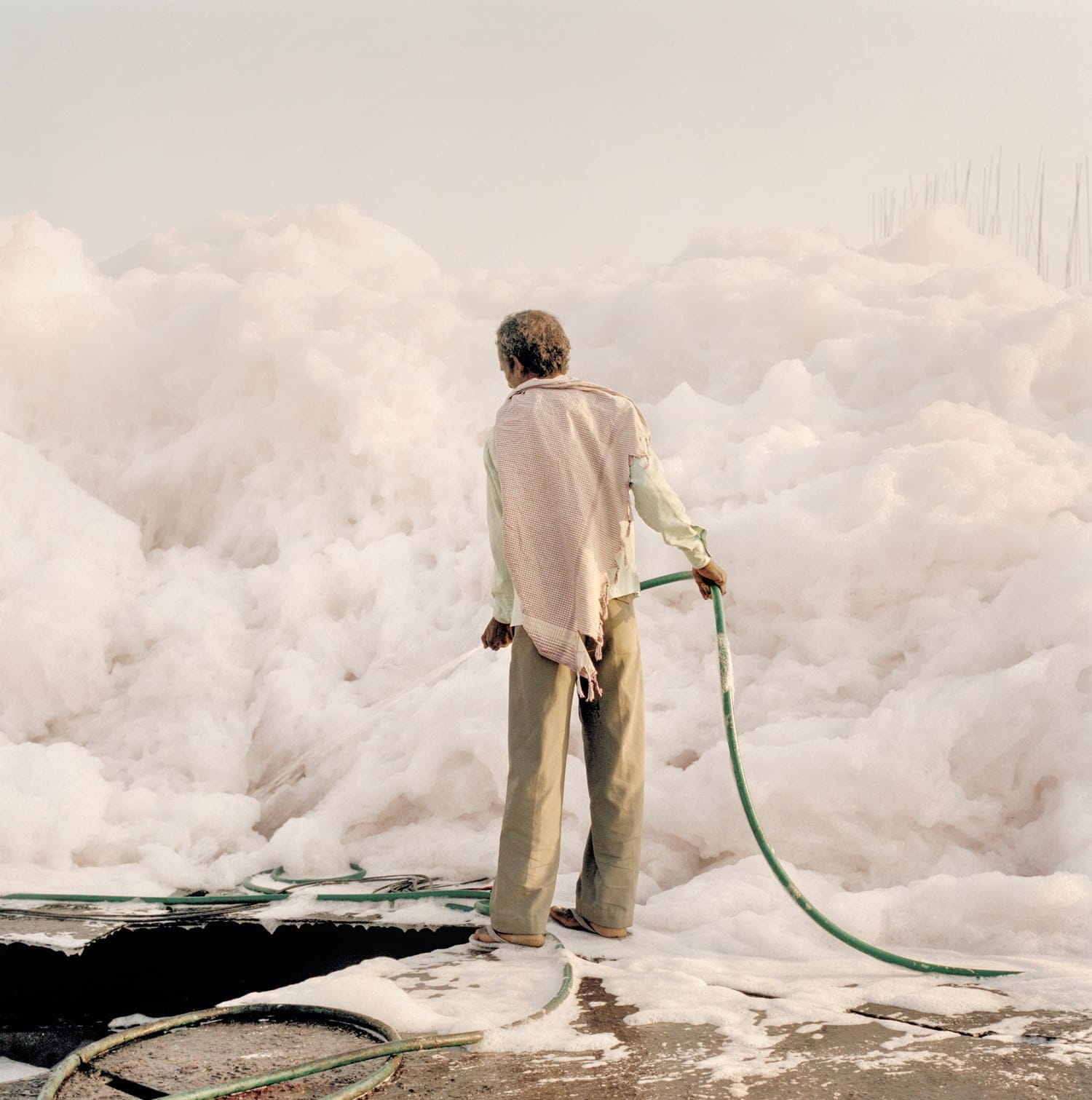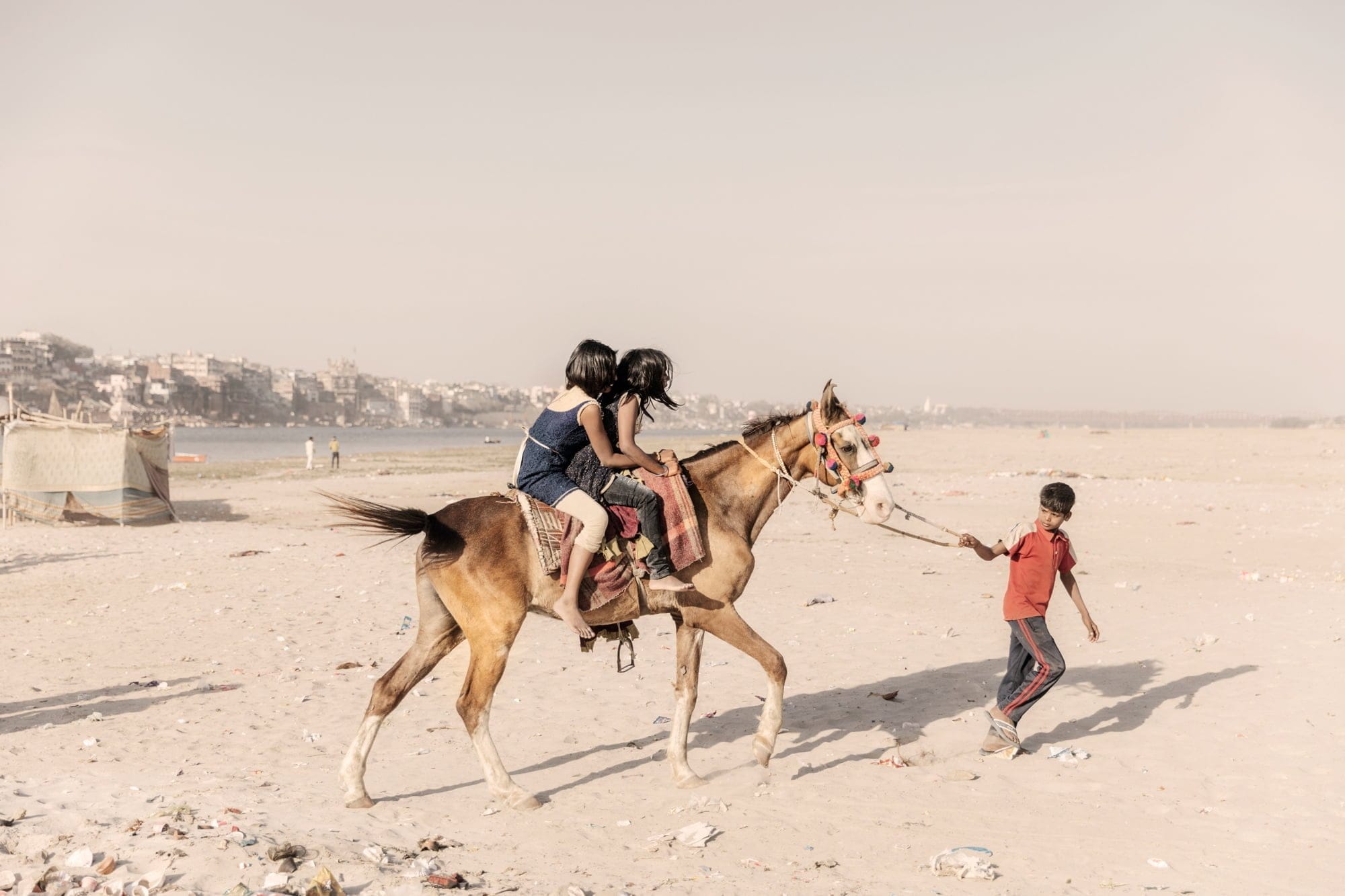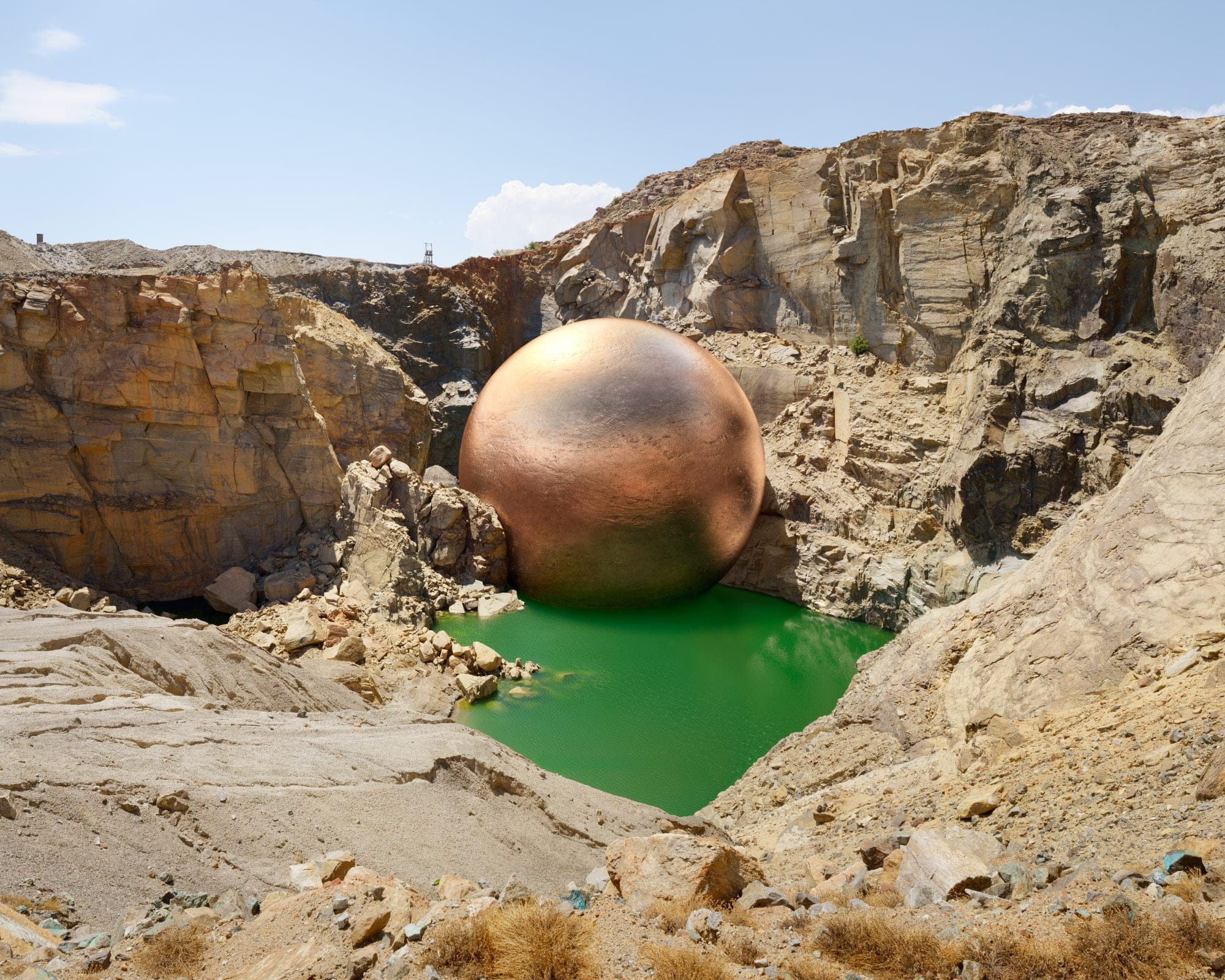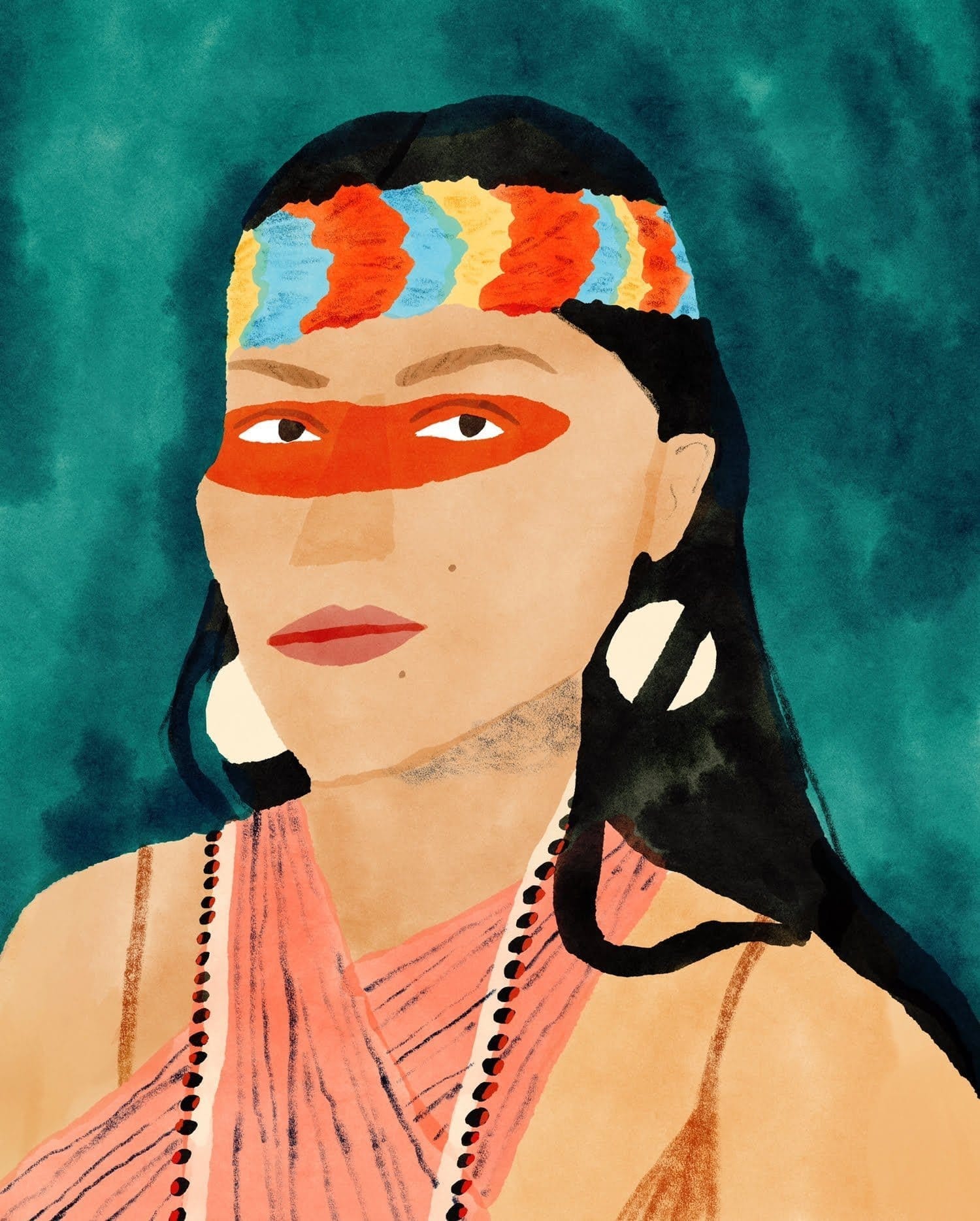Giulio Di Sturco spent ten years photographing industrialisation and environmental decline along the Ganges river. The results are unexpectedly beautiful.
Flowing more than 2,500 kilometres from the Himalayan glaciers to the Bay of Bengal, the Ganges is India’s longest river and its most sacred. Known as Ganga Ma (Mother Ganges), the river is revered as a source of water, food and religious purification.
At first glance, Di Sturco’s softly coloured, hazy photos of life along this vital waterway seem to reflect the same reverence. But a closer look reveals a darker reality. The haze is in fact toxic smog, and the riverbank is littered with rubbish.
One striking shot shows a man holding a garden hose bathed in early morning light. He is trying to wash away a fluffy mountain of what turns out to be foam from chemical waste dumped in the river by nearby factories. It’s a task he repeats every day.
Di Sturco calls his attempt to find beauty in the dirty side of industrialisation “a new aesthetic of pollution”. By enticing rather than shocking, he hopes to make us take a second look and spark a wider debate about how global challenges like pollution are portrayed. “For me, we are a bit saturated by images in the press,” he told the British Journal of Photography. “If you are able to talk about any issue in a different way, I think it has more impact.”
